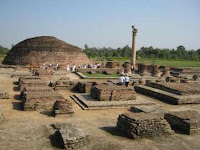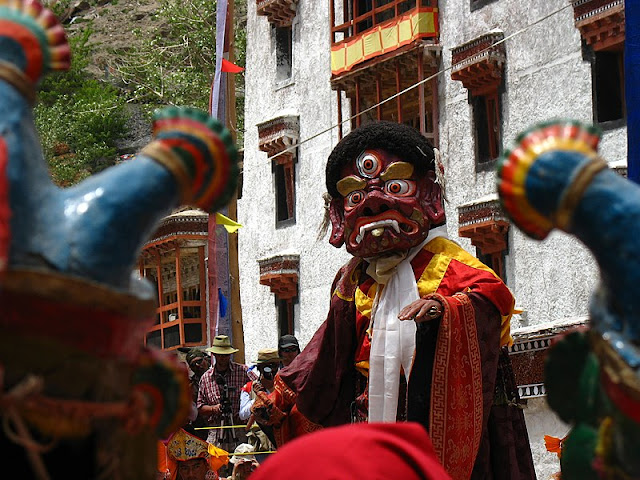Q.1. “Only mad men outside lunatic asylums could think or talk of independence”. Who among the following had made this remark in the backdrop of nascent idea of Swarajya?
(a) Lord Hardinge
(b) Lord Curzon
(c) Gopal Krishan Gokhle
(d) Pheroz Shah Mehta
Q.2. Who among the following was the only British king to visit India during the British Rule?
(a) Edward VII
(b) George V
(c) James II
(d) Edward VI
Q.3. Nobel laureate Rabindranath Tagore renounced his knighthood to protest which among the following?
(a) Jallianwalla Bagh Massacre
(b) Partition of Bengal
(c) Execution of Bhagat Singh, Rajguru and Sukhdev
(d) Execution of Khudiram Bose
Q.4. Which one of the following Muslim leaders was not a part of the Non-cooperation movement started by Gandhiji?
(a) M.A.Jinnah
(b) M.A.Ansari
(c) Hakim Ajmal Khan
(d) Abul Kalam Azad
Q.5. Jallianwala Bagh massacre took place on _______.
(a) 13 April 1919
(b) 13 April 1920
(c) 13 April 1921
(d) 13 April 1922
Q.6. Where did the Jalianwala Bagh massacre take place?
(a) Amritsar
(b) Lahore
(c) Ludhiana
(d) Gujranwala
Q.7. The Non-Cooperation Movement was at its peak during the Viceroyalty of ___________.
(a) Lord Chelmsford
(b) Irwin
(c) Reading
(d) Hardinge
Q.8. Which among the following is not written by Rabindra Nath Tagore ?
(a) Chitra
(b) Kapal Kundala
(c) Chandalika
(d) Chitrangada
Q.9. Which one of the following is not correctly matched?
(a) India wins Freedom-Surendra Nath Bannerjee
(b) Anand Math-Bankim Chandra Chatterjee
(c) Poverty and Un-British Rule in India-Dadabhai Naoroji
(d) Unhappy India-Lala Lajpat Rai
Q.10. Who is known as the father of the local self government in India?
(a) Lord Irwin
(b) Lord Ripon
(c) Lord Canning
(d) Lord Dufferin
Answers
1-c
Ridiculing the idea of Swaraj in 1903, Gopal Krishna Gokhale had said "Only mad men outside lunatic asylums could think or talk of independence".
2- b
George V is the only British king-emperor to travel to India. In 1911 during the Delhi durbar - or mass assembly George V was proclaimed Emperor of India.
3- a
Rabindranath Tagore renounced his knighthood in protest in protest for Jalianwalla Bagh mass killing that took place in Amritsar, Punjab 1919. He wrote a letter to Lord Chelmsford, the British viceroy, repudiating his Knighthood to protest the Jalianwalla Bagh mass killing.
To protest the massacre Mahatma Gandhi also gave up the title of Kaiser-i-Hind, bestowed by the British for his work during the Boer War.
4- a
Maulana Abul Kalam Azad was a vocal proponent of the Non-Cooperation Movement (1920-22) started by Gandhiji and was actively involved in the Non-cooperation Movement.. Mukhtar Ahmed Ansari was at the core of the political activities during the Non-Cooperation Movement (1921).
Hakim Ajmal Khan was elected to the All India Khilafat Committee speareheain the Khilafat Movement that took place in concert non-cooperation movement
Jinnah was opposed to non-cooperation movement.
5-a
The Jallianwala Bagh massacre took place on 13 April 1919 when troops of the British colonial power under the command of General Dyer opened fire on thousands of people who had gathered at the Jallianwala Bagh public gardens in Amritsar to protest against the Rowlatt Act and arrest of pro-independence leaders of Amritsar, Saifuddin Kitchlew and Satyapal.
On April 13, General Dyer opened fire on the public which had gathered at Jallianwala Bagh, Amritsar for the celebrations of Baisakhi Festival.
6-a
The Jallianwala Bagh massacre took place in Amritsar on April 13, 1919, when British troops opened fire on the public which had gathered to protest against the Rowlatt Act and arrest of pro-independence leaders Barrister Saifuddin Kitchlew and Dr Satyapal..
7-c
Lord Reading was the Viceroy of India during which the Non-cooperation Movement had reached its pinnacle and was abruptly withdrawn by Mahatma Gandhi in 1922.
8-b
Kapalkundala is a Bengali romance novel by Bankim Chandra Chattopadhyay who is also the writer of the National Song of India.
9-a
India Wins Freedom was written by Maulana Azad, a prominent political leader of the Indian National Congress and was elected as the President of Indian National Congress President in 1923 and 1940.
Anandamath is a Bengali historical novel, written by Bankim Chandra Chattopadhyay and published in 1882. It is inspired by and set in the background of the Sannyasi Rebellion in the late 18th century. Vande Mataram, National Song of India, was published in this novel.
A critic of British economic policy in India, Dadabhai Naoroji is known for his enunciations of the Drain Theory in his long paper, Poverty and Un-British Rule in India.
Unhappy India is one of the works of Lala Lajpat Rai.
10-b
Lord Ripon was known as the Father of Local self-government. He had introduced local self-governance in 1882. Lord Ripon's Resolution of 1882 is regarded as the "Magna Carta" of local self-government in India.







.jpg)


